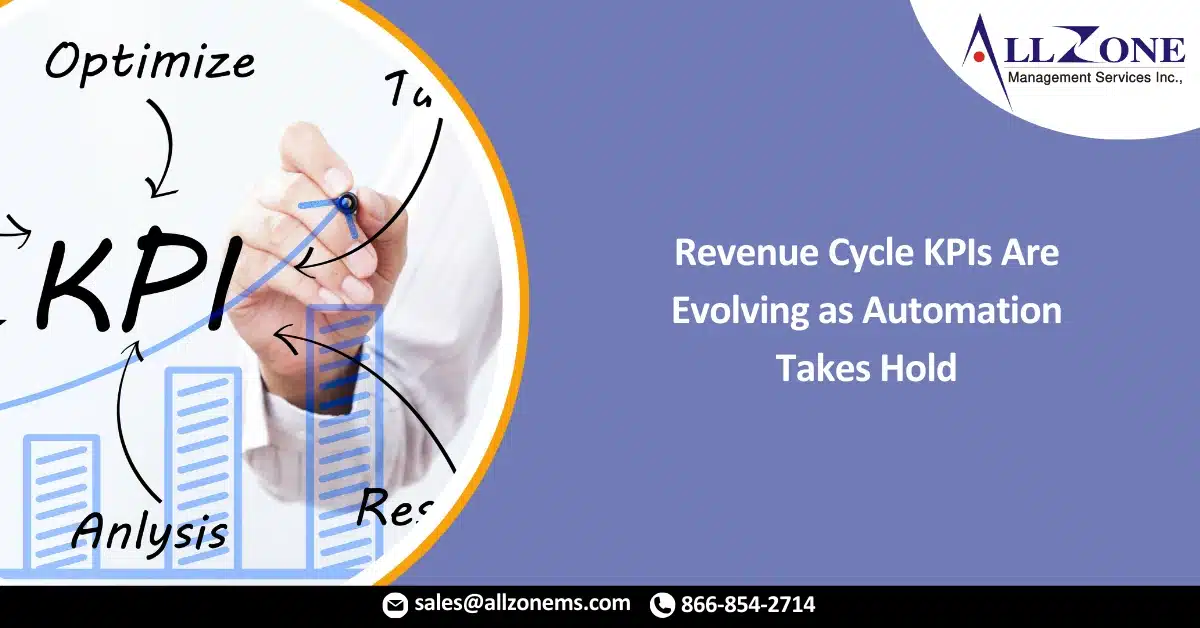Leaders identified the number of days a claim sits in accounts receivable, the number of past due patient bills, and initial denials rates as top revenue cycle KPIs.
The top revenue cycle key performance indicators (KPIs) are evolving as more organizations use automation to pinpoint high value operations to improve revenue cycle management, according to an AKASA survey emailed to RevCycleIntelligence.
AKASA received responses from more than 350 revenue cycle leaders at health systems across the country through the Healthcare Financial Management Association’s (HFMA) Pulse Survey program.
The survey asked respondents to organize five KPIs in order from most to least important for their organization’s success: net days in A/R, aged A/R, initial denials rate, discharge not final billed (DNFB), final write-offs rate, and cost to collect.
Survey respondents identified the top three revenue cycle KPIs as:
Number of days in A/R
Aged A/R or number of outstanding unpaid past due patient bills
Initial denials rate
Discharged not final billed, final write-offs rate, and cost to collect were the least important measures of success to most leaders, respectively.
There were some notable exceptions to the trend, as organizations with higher annual net patient revenue tended to prioritize the final write-offs rate more often. CEOs, CFOs, and senior executives still consider cost to collect to be a crucial measure of success, but it was a less prominent metric in day-to-day revenue cycle operations.
Revenue cycle management automation allows organizations to easily assess data and determine which operations bring in the most value. Days in accounts receivable is quickly becoming a crucial KPI for healthcare organizations because less days in accounts receivable equates to practices getting paid quicker.
Automation has the potential to improve metrics like days in accounts receivable by increasing accuracy and consistency, according to survey authors. This can subsequently lead to greater revenue capture.
A 2020 KLAS survey revealed that providers agree that revenue cycle management is ripe for innovation and improvement. Tedious manual revenue cycle operations prevent health systems from innovating to their utmost potential, and the financial strains posed by COVID-19 exposed a crucial need for revenue cycle optimization.
For Key-Whitman Center in Texas, automation helped to decrease accounts receivable by 38 percent within just three months. Investing in automation technology allowed Key-Whitman Center to streamline workflows and sharpen KPIs.
Additionally, workflow automation can reduce administrative burden while saving time and money. With automated systems creating patient statements and verifying eligibility, staff can focus on more complex operations to further improve revenue cycle management.
Front-end optimization also ensures patient access and can be crucial to revenue cycle management. Experts recommend finding a partner and outsourcing revenue cycle management to minimize confusion, especially for smaller organizations.
Despite its benefits, about one-third of health systems do not use revenue cycle automation, according to a previous AKASA survey. Respondents from organizations with net patient revenues between $1 billion and $10 billion reported the most use of automation, and over half of respondents who do not already use automation plan to implement it by the end of the year. Even so, 37 percent still say that implementing revenue cycle automation is not a priority for their organization.
For more information: https://revcycleintelligence.com/news/revenue-cycle-kpis-are-evolving-as-automation-takes-hold

